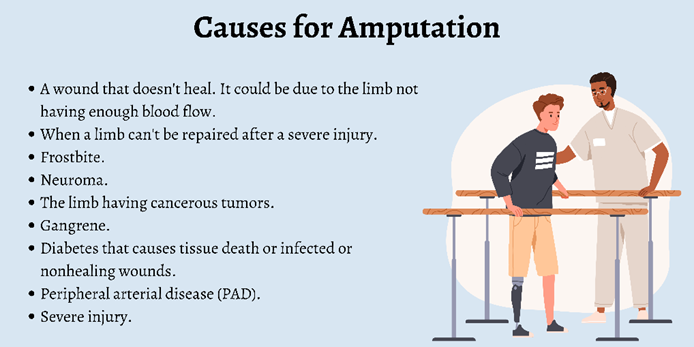
Amputation—the removal of a limb or part of a limb—is a life-altering medical procedure that can result from trauma, disease, or congenital conditions. While the physical loss is significant, the emotional and psychological journey that follows is just as crucial.
CAUSES OF AMPUTATION
Amputation may be necessary for several reasons, including:

– SEVERE INJURY: From accidents, burns, or combat trauma.
– CIRCULATORY DISORDER: Especially in diabetics, where poor blood flow leads to tissue death.
– INFECTIONS: That fail to respond to treatment and threaten overall health.
– CANCER: Bone or soft tissue tumors may require removal to prevent spread.
– CONGENITAL DEFECTS: Some children are born with limb deformities that may be treated through surgical removal.
THE PROCEDURE
Amputations are performed under anesthesia. Surgeons aim to remove as little as necessary while preserving functionality. Post-surgery, the limb is shaped for optimal prosthetic use if applicable.
RECOVERY AND REHABILITATION

Recovery includes wound care, pain management, and physical therapy. Phantom limb pain, a sensation that the amputated limb is still present, is common and manageable with proper support.
Rehabilitation focuses on strength building, balance, mobility training, and adapting to prosthetics. Emotional support through counseling or peer groups is also vital.
LIFE AFTER AMPUTATION

Thanks to advancements in prosthetics and rehabilitation, many amputees lead full, active lives. Occupational therapy helps individuals return to daily activities and work.
While amputation is a major transition, it does not define a person’s future. With the right medical care, support, and mindset, individuals can regain independence and confidence, embracing life beyond limb loss.
By: Adenola Eniola

